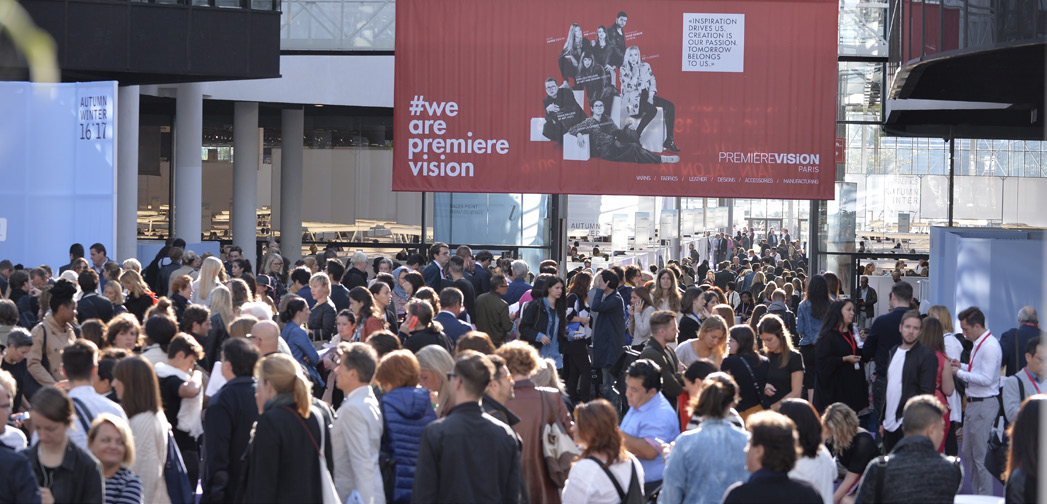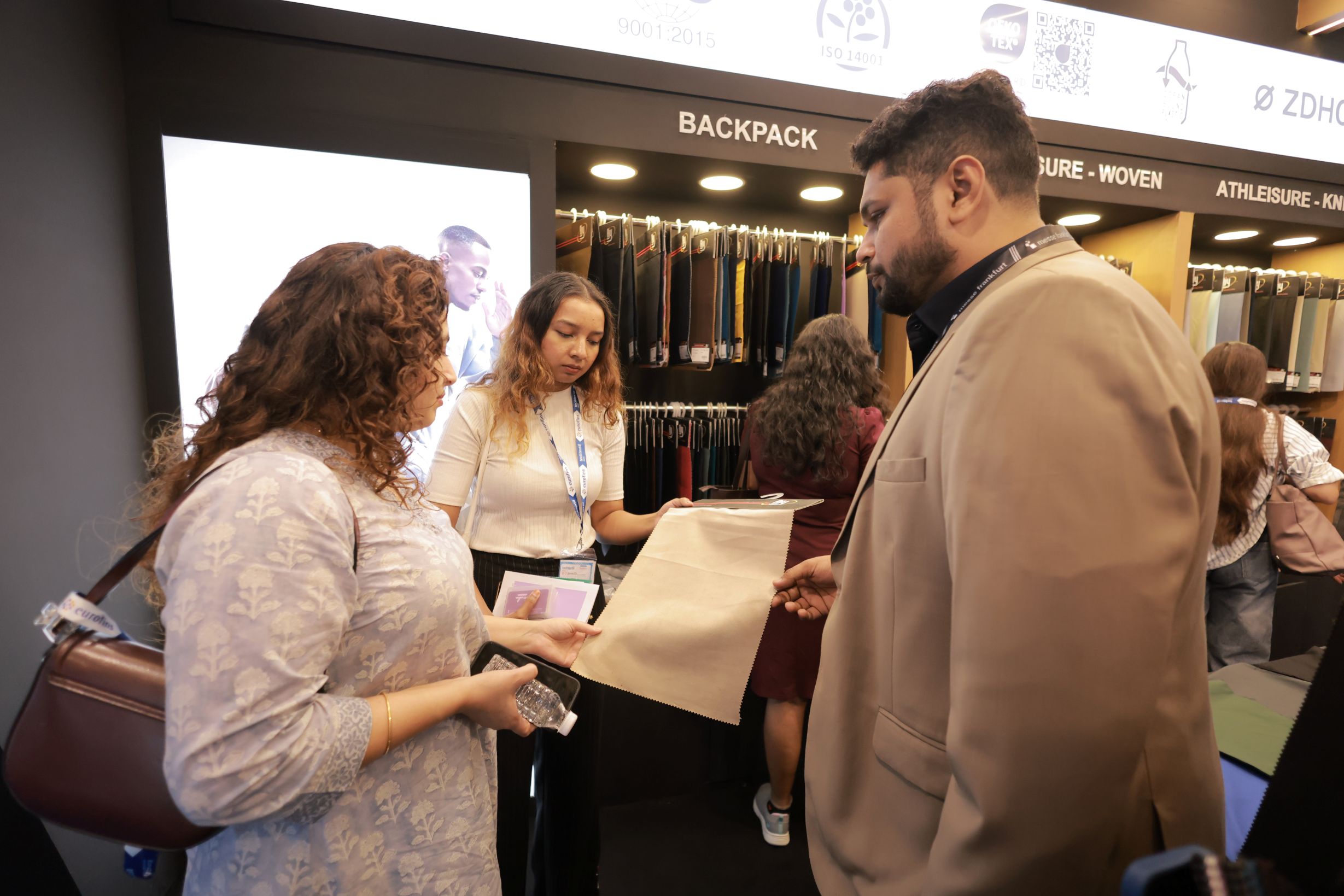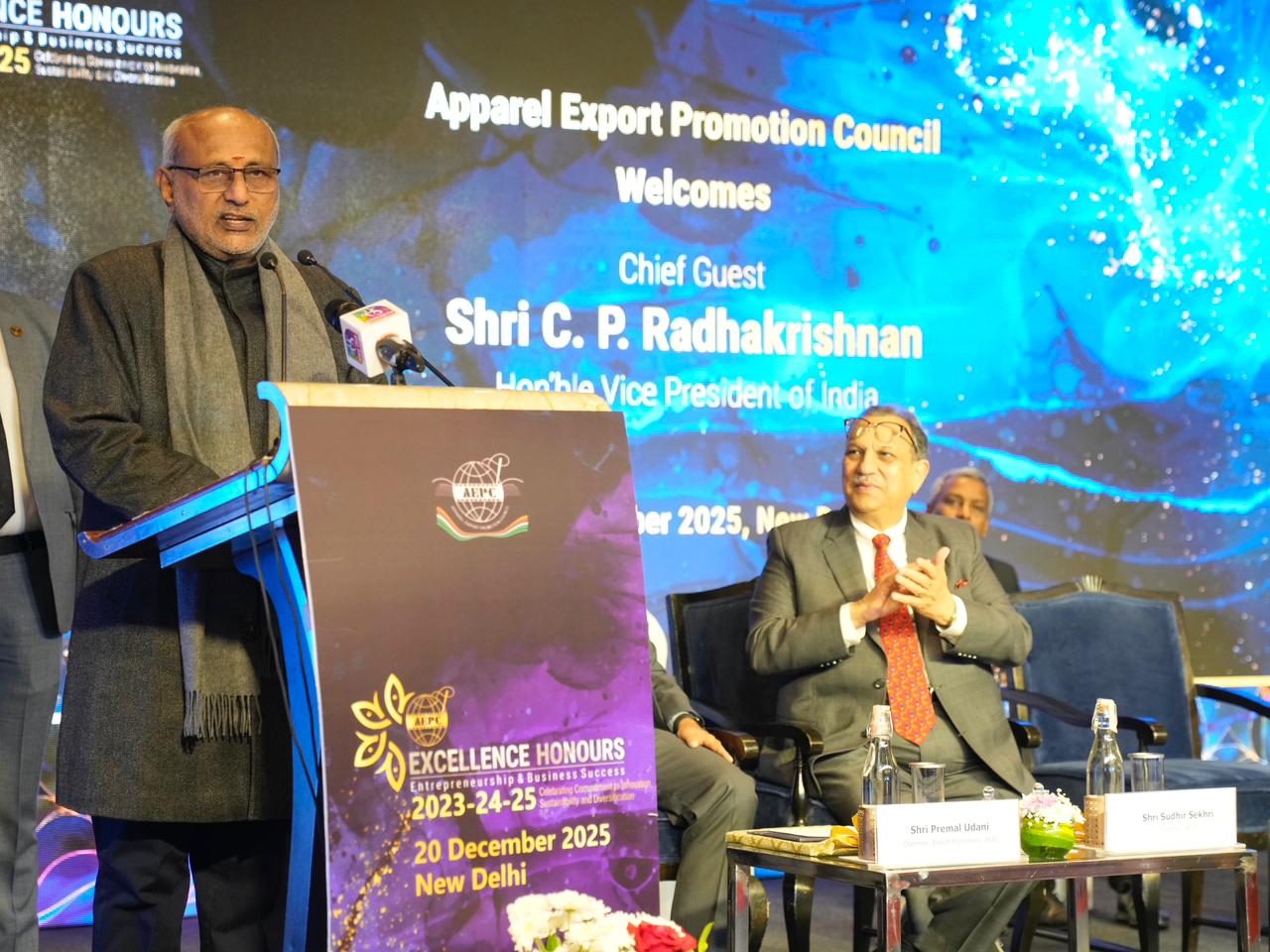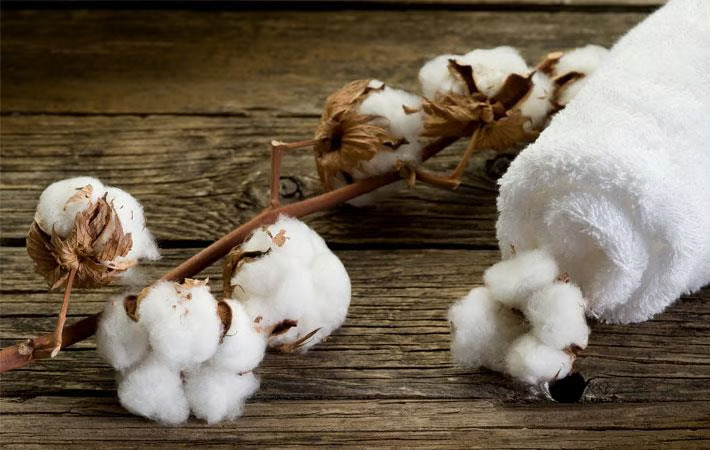FW


Through strengthened interactions and synergies between its six shows, the event was able to showcase specifics of business specialties and know-hows. There were 1,924 exhibitors who showcased their latest offerings to nearly 61,700 visitors, who visited the shows this season. Attendance was almost stable in terms of September 2014 edition.
Six integrated shows offer latest under one roof
Exhibitors recognised the quality and professionalism of increasingly international visitors. Visitors pointed out that it was at these shows that fashion directions are confirmed or reversed and they discover new inspirations and ground-breaking developments for their upcoming collections. The dynamism and strong business activity at the latest edition reflect a renewed optimism in a fashion industry looking for innovative, creative and differentiating products.
Each season, the six Première Vision Paris shows meet the same high standards of selectivity, quality and creativity in terms of offer and services. Around 1,924 exhibitors including 154 new companies from 57 countries presented their collections and latest seasonal developments.
Yarns and fibres, fabrics, leathers and furs, designs, accessories and components, fashion manufacturing... for three days, the global event for fashion professionals presents to the world’s fashion players a rich and exclusive offer across its shows. The full integration of Première Vision Paris shows led to collaboration of know-hows, to create connections between exhibitors and showcase interactions between different businesses. This new dynamics enabled some exhibitors - whose skills intersected several shows or businesses - to integrate new areas and reposition themselves to further improve their performance.
Rise in quality visitors from across geographies
Visitors were increasingly international - up by a percentage point this season over prior editions - and came from 132 countries. They were primarily from Europe. France is in the lead with over 16,200 visitors followed by Italy with more than 7,000 visitors. The UK, with 9 per cent of attendance and nearly 5,500 visitors was in the 3rd place. This trio is followed by Spain with more than 3,400 visitors, Germany with 2,982 visitors followed by Belgium and the Netherlands.
Some 13 per cent of industry professionals came from Asia. Japan, a major buyer of fashion and creative textiles, saw increased attendance with 1,901 visitors this session, while South Korea is establishing itself as a true future market for creative fashions, with an 8 per cent rise in visitors. Lastly, despite the recent devaluation of its currency and the slowdown in its economy, China saw a 17 per cent increase in visitors.
With over 2,800 visitors, North America, albeit slightly down due to the coinciding New York Fashion Week, continues to be represented by high number of quality visitors. The US stands in 7th place in terms of visiting countries, with over 2,400 fashion decision makers attending during the three days. For its part, Russian attendance, marked by a 13 per cent decrease, was in line with the September 2014 and February 2015 editions. Turkey is not to be left behind. With 2,350 visitors, this key country in the sector saw attendance rise by 3 per cent, bringing it to 8th place among visitor countries.
Première Vision Paris shows also saw a wide variety of visitors, both in terms of size - from independent designers to international groups, including small and medium-sized enterprises - and positioning - from mass-distribution brands to luxury houses, including medium and high-end fashion and accessory brands.
Events, seminars through the three days
Beyond the exhibition spaces of its shows and the rich and complementary offer they propose, beyond its various forums, each session Premiere Vision Paris organises events and collaborations dedicated to creativity and specific themes, to give food for thought and inspiration to its exhibitors and visitors. Some of these events helped highlight the creative and transversal richness of the shows’ offer, while others made it possible to look ahead to major evolutions.
There were six prize winners for the 7th PV Awards. Until now the PV Awards have distinguished only the most creative and innovative fabrics from the collections of Première Vision Fabrics exhibitors. For the 7th edition, competition was opened up to leathers presented by tanners at Première Vision Leather. Thus, instead of the four usual prizes, six PV Awards were presented this year - three for fabrics and three for leathers.
Like every year September edition of Première Vision Designs partnered with the Texprint competition, open to young international design students at British fashion universities, of which it is one of the main sponsors. The 24 finalists showing at the Texprint Village were a key attraction for buyers, designers and fashion brands looking for new discoveries and ideas. In addition to the five existing prizes, a new Texprint Award was awarded by the competitions’ partners and a jury of industry professionals, presided over by Rosita Missoni.
www.premierevision.com
Ahmedabad-based denim fabric maker Nandan Denim is set to raise Rs 50 crores by issuing 2.5 million fully convertible warrants to UK-based foreign institutional investor Polus Global Fund. Nandan is India’s second and world’s fifth largest integrated denim fabric maker. The warrant holder will have to pay an amount equivalent to at least 25 per cent of the consideration on or before the allotment of warrants while the balance 75 per cent shall be payable on or before the time of exercise of the warrants.
The UK-based FII currently holds 1,35,000 shares or a 0.30 per cent stake currently in the company, which will increase to 2.63 million shares or 5.48 per cent post conversion of the warrants into equity shares.
The company will use the fresh funds for expansion projects. Nandan Denim is in the middle of its capex execution with an outlay of Rs 612 crores for expansion of its denim fabric manufacturing capacity, spinning capacity and shirting capacity. The capex has a requirement of equity funding to the tune of 30 per cent and this equity infusion, coupled with the internal accruals, would balance the funding while the external funds have already been tied up.
www.chiripalgroup.com/nandanexim.php
The eighth edition of CEO Conference being organised by the Southern India Mills Association will be held in Tamil Nadu on September 25. The topic of discussion will be: how to overcome the challenges in textile business especially under the ‘Make in India’ program. The theme is in line with PM Modi’s vision of the need to boost textile manufacturing activities in the country and exports. Currently, the hurdles before the industry are tariff barriers, fluctuations in cotton prices, imports of Chinese textiles and tariff advantages of competing countries.
The textile industry feels ‘Make in India’ would be feasible only when products are manufactured economically and sold at competitive prices in a globalised ecosystem. While the textile industry is content with the record production of cotton, it is worried over falling prices of the fiber and cotton yarn.
SIMA, aimed at boosting the textile industry of South India organises a number of events and trade shows throughout the year which bring together different mills operating in the region in front of a large number of target customers. SIMA has more than 300 members from textile mills spread over Andhra Pradesh, Karnataka, Kerala, Pondicherry and Tamil Nadu.
www.simamills.org/
Buyers of cashmere shawls are being protected by the state government of Jammu and Kashmir from imitations with nanotechnology. To turn wool into a work of art that is the cashmere shawl is no easy task. Skilled Kashmiri weavers working on traditional spinning wheels and looms are behind creating this artistic product.
However, the art faces new challenges and one of them is automated spinning machines and looms that turn out shawls faster than handicraft workers. The annual trade in cashmere shawls now exceeds $752 million. The yarn must be spliced with synthetic fibres, for the automated looms to work on the fine 12-16 microns wool of the pashmina goat. Nano particles with unique codes are inserted in the authentication labels carrying the ‘Kashmir Pashmina’ legend, which has geographical indications (GI) protection under the Trade-Related Aspects of Intellectual Property Rights Agreement of the WTO.
Kashmiri craftsmen are benefitting from these measures. Experts say, fake pashmina shawl makers add nylon fibre to the wool before spinning and weaving it on machines. Professor Yasir Ahmad Mir of Srinagar’s Craft Development Institute, points out traditional Kashmiri spinning wheel and loom are perfect for producing fine pashmina fabric. Machine spinning is not meant for the extremely fine pashmina fibres, and so nylon is added to them.
Kashmir government’s initiatives to protect the interests of herders and craftspeople can be seen at the Pashmina Testing and Quality Certification Centre. Established at a cost of US$ 10 million, the centre has been functional since June.
Switching to organic cotton could reduce the global warming impact of cotton production by 46 per cent, compared to non-organic cotton, according to a report published in (Cool Cotton—Cotton and Climate Change) the Soil Association.
Consumption of scarce fresh water can also be reduced by over 90 per cent and energy use by over 60 per cent due to organic cotton. By contrast, if current practices remain unchecked, from cotton production could increase to 300 million tonnes of CO2e by 2020.
Due to its heavy use of insecticides and water, high GHG emissions, and land use, cotton has been termed as the world’s dirtiest crop. 26 million tonnes of cotton was produced globally in 2013-14, on about 33 million hectares of land in a hundred countries. This was done using 2.5 per cent of the world’s farmland. One hundred million households are dependant on cotton farming. These are mostly in some of the poorest countries of the world. Cotton is also responsible for 16 per cent of the global insecticide use—more than any other crop, apart from GHG emissions. Across the world, cotton production releases 220 million tonnes of CO2e, and one tonne of non-organic cotton produces 1.8 tonnes of CO2e.
Organic cotton is in great demand today. Global market for organic cotton grew by 67 per cent last year, and is now worth an estimated $15.7 billion. Sales of Soil Association certified textiles rose 3.4 per cent to £18.6 million last year in the UK and global production of organic cotton is estimated to increase by 15-20 per cent in 2014-15.
Techtextil North America will be held on May 3 to 5, 2016 where experts will gather to discuss industry advancements in the field of technical textiles. This is the 13th edition of North America’s only dedicated show for technical textiles and nonwovens. The event will address market developments, technological information, new technical processes and products, as well as international industry trends. It is a platform for exhibitors interested in introducing new brands.
Presentations by top industry experts are an attraction. They will provide exciting insights on new topics in a variety of formats. These sessions will give visitors and exhibitors the opportunity to engage and gain knowledge about upcoming advancements in their application field. Visitors will have access to a vast array of products and solutions from areas in technical textiles, durable nonwovens, sewn product equipment, software, geo synthetics, and composites. There will be yarns, woven fabrics, coated textiles, knitted fabrics, canvas products, composites, accessories, machinery, fibers and more.
The exhibition assembles all vertical aspects of the technical textile industry – from research and development, through raw materials and production processes and finally ending in conversion, further treatment and recycling.
www.techtextilna.com/
Patagonia is marketing a new line of organic cotton where colors are dyed through an innovative process that is eco-friendly. In recent years, consumers are becoming aware about what is behind the things they buy. This is sensitising more and more companies and bringing them to implement a true revolution in terms of materials used, production processes and chemicals and working conditions.
Patagonia, is getting recognition for a real revolution in the production of its jeans. Hazardous chemicals used for cotton production were shelved in favor of organic production. Harmful pesticides, synthetic fertilisers, herbicides or chemicals poisonous to humans and environment were totally avoided.
Traditional denim dyeing involves the use of millions of liters of water and various wash and rinse cycles to achieve the desired result. Patagonia invested in research and now, thanks to a new dyeing process and production through coloring that more easily adheres to the cotton, it is able to minimise the consumption of resources and related environmental damage.
The result is a substantial reduction of environmental impact of denim production chain: savings of 84 per cent water, 30 per cent electricity consumption and 25 per cent Co2 emissions.
https://www.patagonia.com/us/denim
Siddiqur Rahman, BGMEA President points out managing low cost fund for factory owners to complete remediation works to turn the RMG sector full-fledged compliant is his main task. Workers safety has been identified by the retailers’ platforms, Alliance for Bangladesh Worker Safety, and Accord on Fire and Building Safety in Bangladesh. Thus, his priority to make the sector safe for workers.
Rahman argues some factories have closed down because of safety inspections by the Accord and Alliance. These factories need relocation. The factory owners are not getting approval of new buildings to establish units in Detailed Area Plan as it is too wide. Thus, Rahman is trying to get the approval of the plan to establish RMG factories to ensure relocation to make the sector compliant. And, to shape the RMG industry in a modern and compliant manner, Rahman’s ultimate goal is the implementation of Bausia Garment Palli.
As far as workers’ rights are concerned, Rahman says, since Bangladesh is an ILO-ratified country, if a factory owner runs it according to rules and ensures all workers’ rights, there is no need to form a trade union forcibly. However, if workers think that their rights are not established, they can form a trade union to bargain as per the laws.
To increase and improve productivity, the BGMEA has introduced Center of Excellence for Bangladesh Apparel Industry (CEBAI), for research and development. Rahman believes if the industry uses state-of-art machinery, information technology and hire trained human resource management team, productivity will rise automatically.
Ultrafabrics, specialises in engineering, manufacturing and distribution of polyurethane materials. Ultrafabrics is a pioneer in the polyurethane synthetic leather industry. Various companies and brands use Ultrafabrics’ products as an alternative to leather or woven fabrics. The manufacturer’s collections offer a great variety of different colors and textures and allow for exciting collaborations across the interior design industry.
Ultrafabrics offers environmentally friendly products. As harmony with human and environmental interaction is important to the company, PVC-free and low VOC (volatile organic compound) attributes ensure a sustainable presence within customers’ inner and outer environment. Manufacturing processes are based on conservation of raw materials, toxic-free solutions, and minimal dependency on natural resources. Standards have been regimented to meet the emissions and environmental criteria from the numerous global markets that Ultrafabrics serves.
Ultrafabrics will exhibit its line of products at the Future Fabrics Expo to be held in England, September 29 to 30, 2015. The expo showcases and promotes innovative and commercially viable fibers, fabrics and products that embody a range of sustainable principles and new technologies. The intention is to creatively inspire designers as well as educate them about the newest developments in sustainable fabrics. For the past five years the expo has been showcasing some of the best low-impact innovations in international fashion and interior textiles.
https://www.ultrafabricsllc.com/
The new goods and services tax (GST) will roll out from the next fiscal year, says finance minister Arun Jaitley. This, despite pending issues regarding direct tax. Jaitley, says the Congress is trying to delay the new tax regime, however, one must remember, it is a transactional tax and not an income tax. He expressed confidence that GST bill will be passed in next session of the Rajya Sabha.
However, he it was not necessary to implement the new regime from April 1, 2016. Also, since it is a transactional tax, it can come into effect from the first date of any other month, Jaitley said. Regarding retrospective tax and minimum alternate tax (MAT) issues in India the minister explained these are over for the future and that transfer pricing has been resolved.
Besides, all macroeconomic parameters now are in the positive territory and GDP growth is expected to outperform 7.3 per cent rate of last year. The positive territory also includes fiscal deficit and inflation. The Chinese economic slowdown, would impact stock markets and added India welcomes Chinese investments in the country. Besides, he mentioned that several sectors are affected by the high cost of capital and that the domestic private sector investments have been slow.
The minister’s tour is intended to attract investors to India. He said the government has prepared a new law to ensure disputes are settled through arbitration in six months to expedite dispute settlement.












